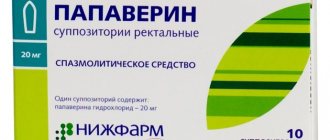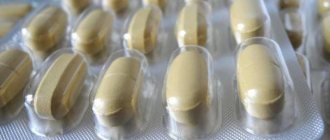08/16/2018 Category: Medicines and vitamins Author: Irina Ivanchik
Painful sensations, soreness and congestion in the upper respiratory tract can overtake a woman at the most inopportune period, when she must think not only about herself, but also about the health of her unborn baby. Naturally, at the first signs of a respiratory disease, a woman turns to proven methods of traditional medicine: drinking plenty of fluids, honey, fresh milk, raspberry jam. But these methods do not always help to overcome the disease, so there is a need to choose the most effective and at the same time safe medication.
- Modern variations of the drug
Table: variations of the drug and their qualitative composition
- Photo gallery: varieties of Ingalipt
- Table: qualitative composition of Ingalipt and its effect on the woman’s body and the developing fetus
- Who is prohibited from using the drug?
Possible negative reactions of the body to taking Inhalipt
- Step-by-step instructions for using aerosol and spray
- Table: “substitutes” for Ingalipt
Photo gallery: “substitutes” of Ingalipt
Inhalipt during pregnancy: properties and description of the drug
The drug is sold in two pharmacological forms: spray and aerosol. Quite a large number of people have no idea what the difference is between these two concepts, the only thing that is clear is that they are not completely identical, however, their similarities are very great.
The main difference between a spray and an aerosol is the concentration of the active substance; it contains more of it, as a result of which it quickly penetrates to the source of inflammation and stops all its manifestations, in short, its action is more effective. As for drugs in the form of an aerosol, they are usually produced in dosage form, as a result they are more convenient for topical use.
Inhalipt contains several active substances, thanks to which it is possible to achieve the desired effect, since they quickly penetrate to the site of inflammation and settle on the mucous membranes in the area of inflammation:
- Eucalyptus oil;
- peppermint oil;
- thymol;
- sulfathiazole;
- sulfanilamide.
Thanks to this combination of components, Ingalipt has a complex effect in the treatment of ailments of the ENT organs, in particular:
- soothes mucous membranes, which entails relief of inflammatory processes;
- helps eliminate inflammation;
- has a disinfecting effect on the mucous membranes, teeth and gums of the oral cavity;
- destroys pathogenic microflora, including pathogenic bacteria and microbes;
- has an antiseptic effect.
When is the drug prescribed?
Inhalipt is a combination medication for local treatment of infectious pathologies of the upper respiratory tract. It has an antiseptic and local anesthetic effect.
The drug should be prescribed by a doctor for throat diseases:
- tonsillitis, including bacterial nature (angina);
- pharyngitis;
- laryngitis;
- flu accompanied by sore throat.
The use of the medicine helps eliminate pain, inflammation, and neutralize pathogenic fungi and bacteria. The effect is observed almost immediately, inflammation and irritation of the mucous membrane is noticeably reduced.
With hot tea
Ingalipt can be used in the form of a spray or aerosol can:
- when using a spray, it is easier to monitor the dosage, since the bottle is equipped with a dispenser, which, when pressed, dispenses only the required amount of medicine;
- the aerosol stream is sprayed as long as pressure is applied to it, so the dosage must be controlled. The advantage of an aerosol is the ability to spray small particles of the solution deep into the respiratory tract.
Can Inhalipt be used during pregnancy? In what trimesters?
Doctors' opinions regarding the use of Ingalipt during pregnancy are quite contradictory. It is worth noting that the vast majority of respected experts are of the opinion that taking the drug is strictly contraindicated during pregnancy, since it contains streptocides.
These components perfectly stop inflammatory processes, however, the specified drug is prohibited from being used in the first and second trimester of pregnancy. In addition, sodium sulfathiazole, which is included in the composition, is completely contraindicated for use in any trimester of pregnancy, since it can cause the development of pathologies and fetal growth.
Doctors can prescribe the drug to a pregnant woman in extreme cases and not earlier than during the third trimester, since during this period all the vital organs and systems of the fetus are formed, the likelihood of complications is minimized. If the situation in a pregnant woman is not urgent, then it is not only possible, but also recommended to give preference to safer drugs.
Is Ingalipt allowed for pregnant women?
The spray was developed by Soviet scientists about 40 years ago to eliminate infectious diseases affecting the oral cavity, in particular the throat. Doctors sometimes recommend Ingalipt to pregnant women, based on the fact that it is a local drug. It is not completely absorbed into the blood and is considered relatively harmless to the fetus. But no relevant studies have been conducted on this issue, so the effect of Ingalipt on the unborn baby is not known for certain.
- Sulfonamides are antibacterial substances in the spray and are safe during pregnancy, depending on the duration of pregnancy.
- Streptocide, together with sodium sulfathiazole, is a substance whose effect on pregnant women has not been studied. They penetrate into the blood and through the placenta, and can accumulate in structures and tissues, as well as in amniotic fluid and placental blood. Before childbirth, medications based on them are used in cases where the risk to the fetus is considered justified. Treatment with sulfonamides during this period provokes anemia and jaundice in a developing baby. The negative impact of these substances on the metabolic processes of bilirubin can affect its penetration into the brain of the embryo and cause serious damage .
Additional substances also pose a threat to pregnancy:
- Thymol, which is included in aerosols and sprays, often provokes miscarriages. It is contraindicated during pregnancy.
- Essential oils are allergens and can increase toxicosis.
The doctor must consider all these factors before allowing Ingalipt during pregnancy.
Indications for use
As we said earlier, the active ingredient of the drug is soluble streptocide - this is a bacteriostatic antimicrobial substance that belongs to the group of sulfonlamides. The drug is indicated for use in the following diseases and conditions in a pregnant woman:
- aphthous and ulcerative stomatitis;
- to relieve sore throat during the flu;
- pharyngitis;
- laryngitis;
- tonsillitis, including bacterial.
With the help of Ingalipt, it is possible to get rid of pain in the shortest possible time, and has an extremely destructive effect on some types of bacteria and fungi. The effect of use occurs in a fairly short period of time, and irritation and inflammation of the mucous membranes is significantly reduced.
How to take aerosol and spray correctly
We are not doctors, therefore we do not have the right to prescribe a drug for ourselves, much less its dosage and duration of treatment, especially if this concerns expectant mothers. Moreover, the official instructions do not recommend taking this medication during gestation. A specialist can prescribe Ingalipt to a young woman only after carefully studying the clinical picture of the disease, as well as the condition of the pregnant woman and the course of pregnancy.
As a rule, the course of treatment should not exceed 10 days.
Step-by-step instructions for using aerosol and spray
To achieve maximum effect from using Inhalipt, you must follow the following rules:
- Rinse your mouth with warm water.
- If there is purulent plaque on the mucous membranes, it must be removed with a cotton swab.
- Shake the aerosol or spray can thoroughly.
- When using an aerosol, you must put the spray cap on the medicine bottle. When using a spray, there is no such need, since the “built-in spout” can simply be placed perpendicular to the bottle.
- The bottle must be held upside down, perpendicular to the floor.
- Open your mouth wide and place the “spray” in it.
- Apply a stream of medicine to the affected areas for 2 - 3 seconds. When using an aerosol - 3 - 4 “injections”.
- The procedure should be repeated no more than 4 times a day.
- After use, the nozzle must be rinsed under running water.
- You must not take food or liquid for half an hour.
It should be noted that there is no Inhalipt for children, so this medication can be used for children over three years of age. In this case, the single, and therefore daily, dose of the medicine is reduced by exactly half.
For me personally, Ingalipt is one of the most effective and affordable medicines for colds, which are accompanied by a sore throat and sore throat. This medicine can be purchased for 100 Russian rubles, so it is one of the permanent “inhabitants” of my home medicine cabinet. Moreover, despite the fact that the instructions prohibit its use by children under three years of age, our pediatrician prescribed it to my daughter when she was only 2.5 years old. I did not notice any side effects on the child’s body. In addition, I had the opportunity to use both an aerosol and a spray. And I can say that the spray, of course, is much more convenient to use, but the aerosol, as it seemed to me, has a milder “taste” and does not cause such gagging. But for babies, it is best to use a spray to irrigate the oral cavity with the exact amount of medicine. Moreover, due to the fairly high pressure of the spray jet, a small child may get scared or choke on the drug.
Instructions for use during pregnancy
The question of whether Ingalipt can be used during pregnancy should be decided by the attending physician individually, based on the patient’s physical condition and the severity of the disease. First of all, the prescription of the drug should depend on the duration of the pregnancy:
- In the first trimester of fetal development, the initial formation of all organs and systems takes place, as well as the laying of the fetus, and the woman’s body adapts to new conditions and spends all its resources to ensure that the pregnancy proceeds fully. During this time, it is strongly recommended to avoid the use of any medications, including Ingalipt. In addition, women who were forced to take the drug in the first 12 weeks of pregnancy reported severe toxicosis.
- Can Inhalipt be used in the second and third trimester of pregnancy? Yes, but strictly as prescribed by the attending physician, who will take into account all the necessary details. In the instructions you can see that clinical studies on its use during pregnancy and lactation have not been conducted.
Arguments for Ingalipt
The developers of the drug and a certain percentage of doctors consider Ingalipt to be completely safe for both the mother and the fetus. Its peculiarity - local application - allows us to assert that the substances do not enter the mother’s bloodstream and cannot penetrate to the fetus.
The drug is active only at the mucosal level.
With such confidence in the safety of Inhalipt, manufacturers prudently add to the annotations a clause about careful use or its prohibition during pregnancy.
Advantages and disadvantages of using Ingalipt during pregnancy
The active and auxiliary components of the drug have a direct effect exclusively on the mucous membranes and only enter the blood in small quantities, so the likelihood of affecting the development of the fetus and the gestation process is minimal.
The following are reasoned arguments against the use of Inhalipt during pregnancy:
- Scientific studies on the use of Ingalipt for the treatment of pregnant women have not been conducted.
- The effect of the drug irritates the nerve receptors in the throat and mouth, which can cause not only nausea, but also vomiting.
- An allergic reaction to eucalyptus and mint essential oils may occur. Women who are prone to hypersensitivity to components should avoid using the product.
- Inhalipt contains ethyl alcohol, the use of which during pregnancy is strictly contraindicated.
- The effect of thymol and sulfonamides on the developing fetus is not fully understood, but it is worth noting that these substances are considered toxic.
Based on the above material, before using the drug Ingalipt, it is imperative to consult with a gynecologist and therapist. It is indicated for use in extreme cases, provided that there are no deviations in the development of the fetus and the woman’s well-being.
What other medications can be used in the treatment of ENT diseases?
Inhalipt is not the first-line medication that doctors can prescribe during pregnancy. This is explained by the fact that this drug has a fairly “strong” composition of its constituent components, so at first, during the initial stage of the disease, the specialist tries to select a more “gentle” drug with a minimal degree of toxicity for the expectant mother. Due to the variety of components, Inhalipt does not have complete structural analogues. But at the same time, pharmaceuticals offer a huge variety of medications for the treatment of ENT diseases, which have a different composition from Inhalipt.
“Brothers” of Ingalipt according to indications:
- Tantum Verde;
- Lysobacter;
- Septolete;
- Hexalize;
- Oralcept;
- Miramistin;
- Bioparox;
- Stopangin;
- Kameton;
- Angidak.
None of the above medications can be used without consulting a specialist; moreover, they are not interchangeable. Each analogue has its own unique composition, contraindications for use and has different effects on the fetus and gestation.
Table: “substitutes” for Ingalipt
| Trade name of the medicine | Active substance | Release form | When can a specialist prescribe the drug to a pregnant woman? Possibility of use in different trimesters of gestation | Restrictions on the use of the medication | Possible negative reactions of the body to taking the drug |
| Tantum Verde | Benzydamine hydrochloride |
|
The use of Tantum-Verde, in particular the solution and spray, is permissible during all 9 months of gestation, but if the benefits of their use outweigh the potential risks, which only a specialist can objectively assess. Modern doctors do not prescribe Lysobact in the first 12 weeks of gestation, or several weeks before the expected delivery. During the second and early third trimesters, the drug can be prescribed only for health reasons. A specialist may prescribe Cameton to an expectant mother if the benefits of its use far outweigh the potential risks. A doctor may prescribe Oralcept to a pregnant woman in all trimesters if the life of the mother and developing fetus is at risk due to a progressive disease. It is permissible for a pregnant woman to use Hexalize only as prescribed by a doctor. |
|
|
| Lysobacter |
| Lozenges |
|
| |
| Kameton |
|
| Individual intolerance to the active and auxiliary components of the drug. |
| |
| Oralcept | Benzydamine hydrochloride | Local action spray |
|
| |
| Hexalize |
| Lozenges |
|
|
Photo gallery: “substitutes” of Ingalipt
The use of Tantum-Verde is permissible in all trimesters of pregnancy as prescribed by a specialist
Septolete is not recommended for use during the first three months of gestation.
Lysobact is not recommended for use by pregnant women in the first trimester of pregnancy.
Hexalize can be taken by expectant mothers as prescribed by a specialist.
The use of Oralcept is possible in all trimesters of pregnancy after consultation with a specialist
Video: how an expectant mother can protect herself from colds
Side effects during pregnancy
Inhalipt during pregnancy is not prescribed in the first trimester; the instructions contain information about the effect of the drug on the developing fetus. Contraindications include the following factors:
- hypersensitivity to the components of the drug;
- congenital deficiency of glucose-6-phosphate dehydrogenase;
- thyrotoxicosis;
- blood diseases;
- renal failure;
- tendency to seizures.
In addition, it is worth noting that the use of Inhalipt can cause a number of side effects. Perhaps the most common of them are allergic. Against this background, the development of anaphylactic shock, minor motor disorders, muscle tremors, bradycardia, headache, erythematous rash on the skin, and the formation of ulcers in the oral cavity is possible.
In rare cases, the following symptoms of drug intolerance may occur: cyanosis and kidney dysfunction, vomiting, dyspepsia, dizziness. If one of the above symptoms develops, you must immediately contact your doctor so that you can be prescribed an analogue.
Analogs
Today, there are quite a large number of analogue drugs that are completely safe for a pregnant woman. In most cases, domestic doctors give preference to the following drugs, which have a similar spectrum of action and effectiveness:
- Faringosept;
- Furacilin solution;
- Miramistin;
- Sopangin;
- Lugol;
- Tantum Verde;
- Kameton;
- Hexoral.
Summarizing all of the above, I would like to note that the treatment of infectious and inflammatory diseases in pregnant women with the help of Ingalipt can be carried out exclusively as prescribed by a doctor and not earlier than the second trimester of pregnancy. These precautions should be followed, since the active and auxiliary components of the drug may affect the development of the fetus.
What drugs can be used instead of Ingalipt?
There are many medicines that are safer for the expectant mother than Ingalipt. Therefore, if there are reasons for this, they can be used instead of this drug for the same purpose. Most often, instead of inhalipt, doctors prefer to use medications that have similar effectiveness and effect:
- Tantum verde;
- Hexoral;
- Lugol's solution;
- Kameton;
- Miramistin;
- Furacillin solution;
- Chlorophyllipt;
- Stopangin;
- Faringosept.
In no case should you independently replace ingalipt with one or another similar drug, because their composition is very diverse, and they differ from each other in contraindications.
Although ingalipt is not the safest remedy that can be used to eliminate inflammation in the oral cavity and treat diseases of the ENT organs in pregnant women, if there are strong indications, then its use during this period is allowed. But a competent specialist must draw conclusions and weigh the possible negative consequences for the body of the expectant mother and her baby.










